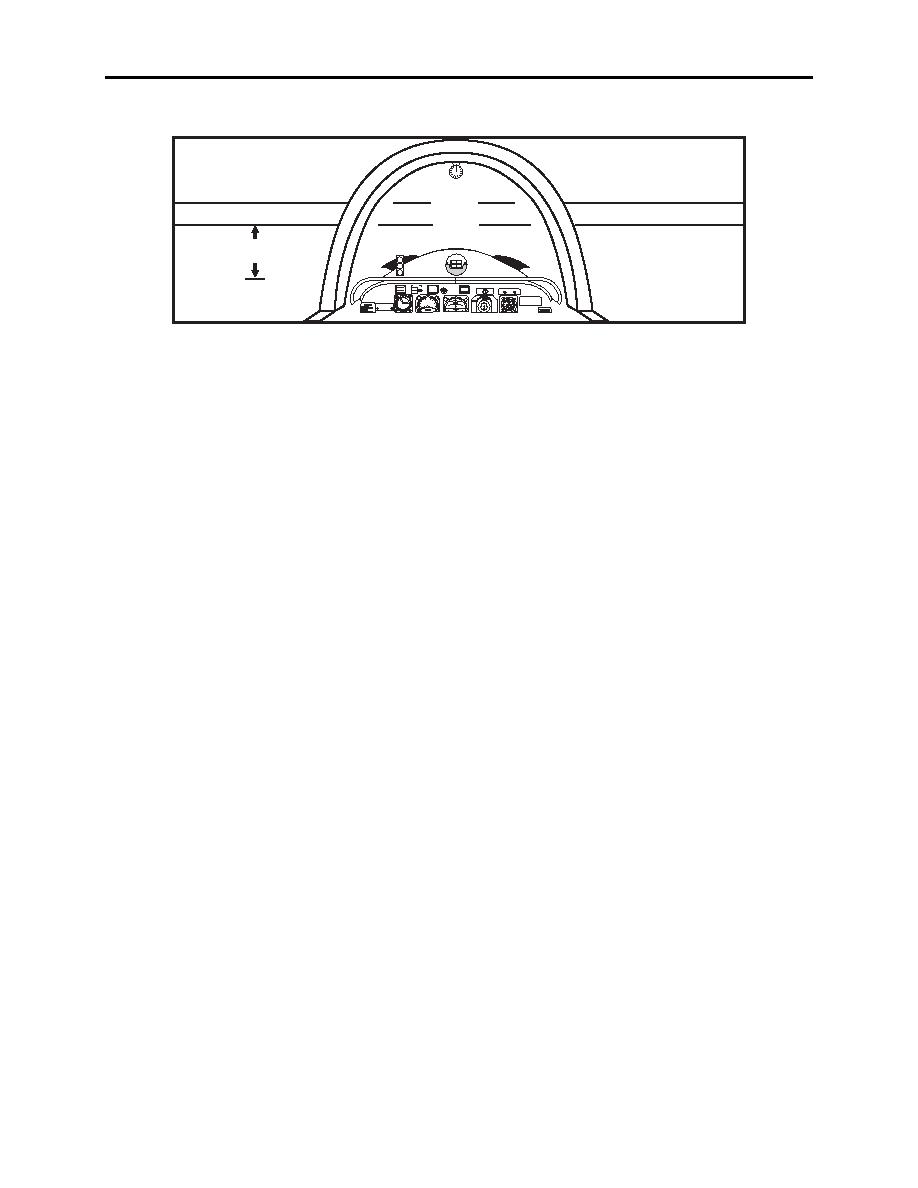 |
|||
|
|
|||
|
Page Title:
Figure 6-1. Straight and Level Flight Attitude |
|
||
| ||||||||||
|
|  T-34C CONTACT
CHAPTER SIX
170 KT
150 KT
3
N
6
INBOARD
GEARDOOR
MASTER
TERE
SYS
WHEELS
LHOPEN
FIRE
ANT
CAUTION
RADIO
VHF
REC
VOR
ACAN
RHOPEN
UHF
VHF
OFF
ON
TEST
O
CAUTION
K
F
400 4060
F
FUELFLOWINDICATIONAND
20
STANDBYCOMPASSERRATIC
350
80
WHENIGNITIONOPERATING
KNOTS
BUNO
0
300
100
160265
10
250
150
Figure 6-1 Straight and Level Flight Attitude
i.
Off airspeed/on altitude. If you note that the altitude is being maintained, but
the airspeed is slow or fast, a power adjustment is necessary, since power
controls airspeed in level flight. Remember each torque setting given in this
manual is a suggested starting point. Once the appropriate power setting has
been changed, a change in the pitch may be required to maintain the attitude for
level flight and, as always, retrim.
ii.
Off airspeed/off altitude. If you have a high airspeed and a loss of altitude or a
low airspeed and a gain in altitude, it is the result of not maintaining the proper
nose attitude. Stop the loss or gain by resetting the level flight attitude, then
correct by trading the excess altitude or airspeed to return to the desired altitude
and airspeed. RETRIM.
iii.
On airspeed/off altitude. If you note that you are 100 feet high, yet the
airspeed is correct, correct to altitude by reducing the power slightly and allow
the nose attitude to lower just slightly so the aircraft will descend back to the
desired altitude. Once returned to altitude, reset normal cruise power setting
and retrim.
3.
Procedures
a.
Maintain balanced flight. Trim.
b.
Set the nose position for straight and level by visually bisecting the windscreen with
the horizon. Crosscheck the altimeter and VSI. Trim.
c.
Set the wing position for straight and level flight by setting the wingtips equidistant
below the horizon. Crosscheck the RMI. Trim.
d.
Continue a working scan and if an error is recognized, make proper corrections.
e.
If an error in altitude is noted on the altimeter, stop the error by adjusting the nose
attitude. Then, using coordinated power and stick pressure, adjust back to desired
altitude. Retrim.
FLIGHT PROCEDURES 6-11
|
|
Privacy Statement - Press Release - Copyright Information. - Contact Us |